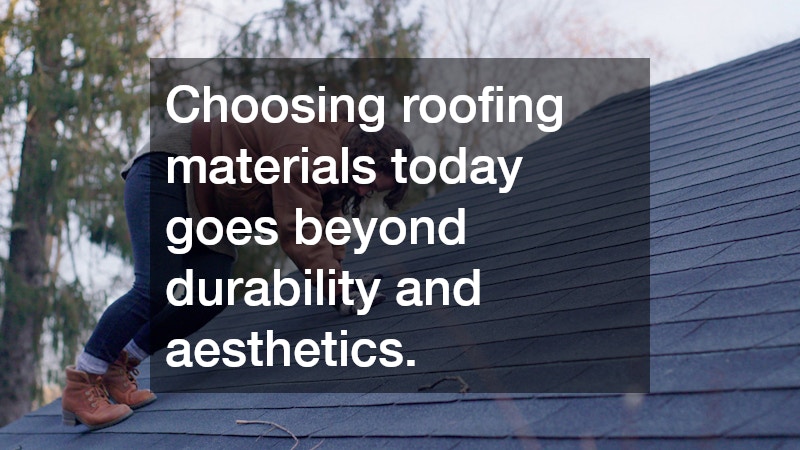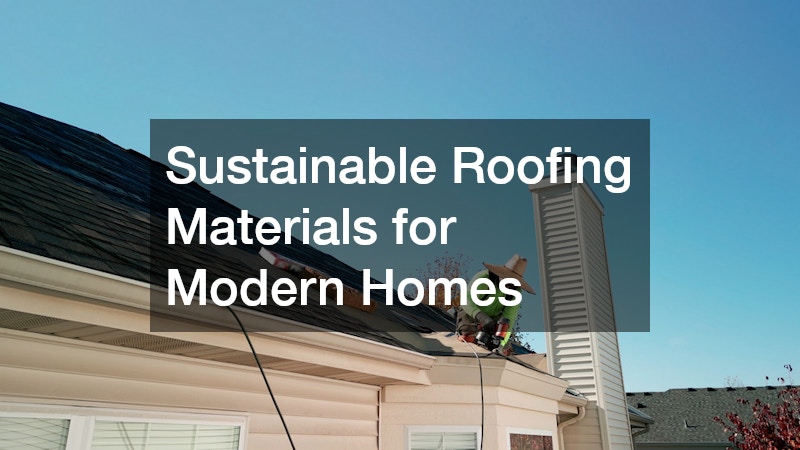Choosing roofing materials today goes beyond durability and aesthetics. Sustainability is a key factor for homeowners who want to reduce environmental impact while maintaining quality and style.
Increasingly, people are recognising the importance of environmentally responsible choices in all aspects of their homes. This shift reflects a broader commitment to preserving natural resources, lowering energy consumption and supporting eco-friendly innovation in building practices. Making informed decisions about roof materials can play a crucial role in achieving these goals without compromising on design or performance.
Benefits of Sustainable Materials & Their Impact
Sustainable materials offer many advantages beyond environmental ones. They contribute to energy efficiency by reducing heat absorption or improving insulation. This lowers energy consumption, which helps reduce utility bills and the carbon footprint of a household. Many sustainable materials also promote better indoor air quality by avoiding harmful chemicals often found in traditional products. Their production processes tend to be less resource-intensive, further reducing environmental impact. Choosing these materials supports responsible manufacturing and encourages innovation in green building technologies.
Durability is another important feature. Many sustainable products last longer than traditional options, meaning fewer replacements and less waste. Additionally, these materials often require less maintenance, saving homeowners time and money in the long run.
Using eco-friendly materials can also increase property value. As more buyers seek sustainable features, a home with green elements stands out in the market. This is especially important for those planning to sell in the future or invest in long-term improvements.
Common Sustainable Materials & Their Advantages
Several materials now qualify as sustainable due to their sourcing, manufacturing process, recyclability or longevity.
Metal is one of the most popular choices for a roof. It is often made from recycled materials and can be recycled again at the end of its lifespan. Metal roofs reflect heat efficiently, which reduces cooling costs and increases indoor comfort. They are highly durable and resistant to extreme weather, making them a sound investment.
Clay and concrete tiles are traditional options with a sustainable edge. Clay tiles are natural and can last for decades. Concrete tiles have improved in design to offer better insulation and durability. Both options are fire-resistant and recyclable, adding to their environmental credentials.
Recycled shingles are gaining traction as an eco-friendly alternative to standard asphalt shingles. Made from recycled rubber, plastic or wood fibre, these shingles divert waste from landfill and provide comparable durability. They come in various styles and colours, offering versatility without sacrificing sustainability.
Green roofs or living roofs take sustainability to another level. Covered with vegetation, they provide natural insulation, absorb rainwater and improve air quality. Although installation can be costly and complex, green roofs deliver significant environmental benefits and create unique outdoor spaces.
Innovations in Materials & Sustainability
Modern technology is driving innovation in materials and design to enhance sustainability. Manufacturers are developing products that integrate solar energy collection, water management and energy efficiency.
One exciting development is solar tiles. These tiles function both as protection and as solar panels, allowing homes to generate clean electricity without the bulky appearance of traditional solar arrays. This innovation blends sustainability with aesthetics, appealing to homeowners who want to reduce energy use while maintaining their home’s look.
Another area of innovation involves reflective coatings applied to materials. These coatings reduce heat absorption and improve energy efficiency. They are easy to apply and can extend the life of a roof by protecting it from UV damage.
Water harvesting systems integrated with roofing are also becoming more common. These systems capture rainwater for reuse, reducing reliance on mains water. Combining these systems with sustainable materials maximises environmental benefits.
Choosing the Right Sustainable Material
Selecting the best sustainable material depends on several factors. Consider longevity, maintenance requirements and how it complements the home’s design. Budget is also important since some sustainable options may have a higher upfront cost but save money over time through energy efficiency and durability.
It is crucial to work with qualified professionals who understand sustainable products and installation techniques. Proper installation ensures that the roof performs as expected and warranties remain valid.
Researching product certifications and environmental ratings can also help. Look for materials that have third-party verification of sustainability claims and low environmental impact.
Sustainable materials are increasingly becoming a standard choice for modern homes. Their benefits range from energy savings to environmental preservation and enhanced property value. Whether you opt for metal, clay tiles, recycled shingles or a green roof, choosing eco-friendly options supports a healthier planet and a more efficient home.
Making an informed decision requires understanding available materials and innovations that improve sustainability. By choosing wisely and consulting experts, homeowners can enjoy roofing that meets their style, budget and environmental goals.
The shift towards sustainable materials is a positive step for the future of housing, reflecting growing awareness of responsible living. Modern homes deserve options that protect both the people inside and the world outside.





